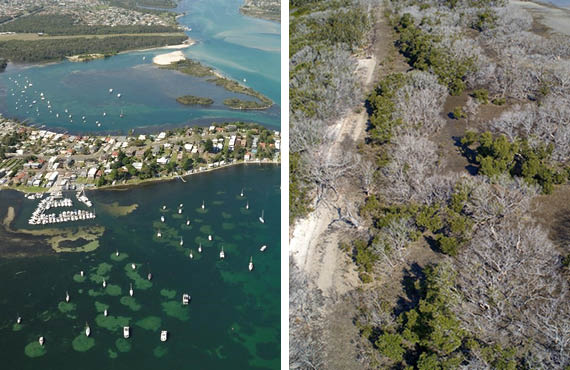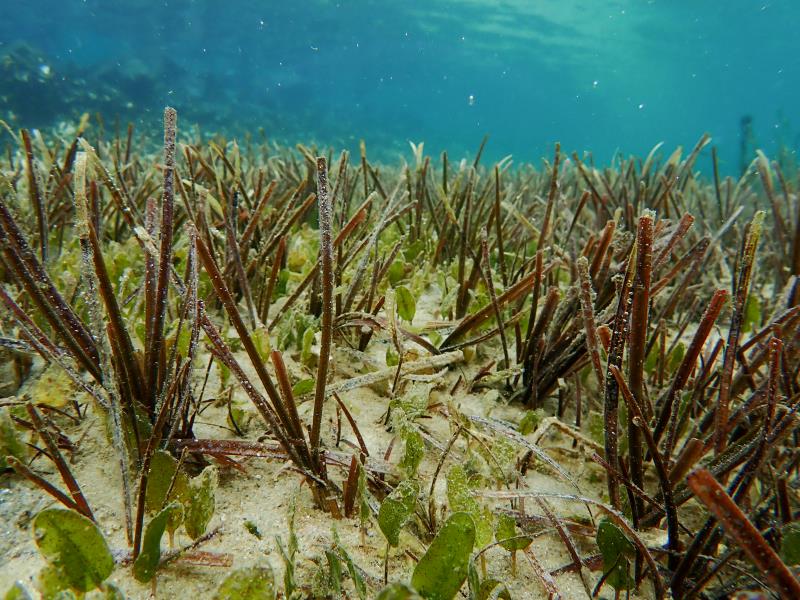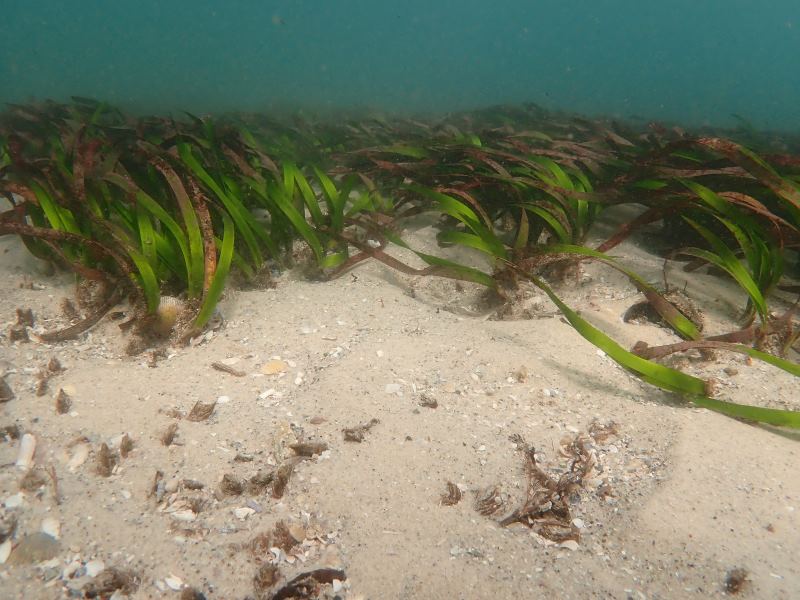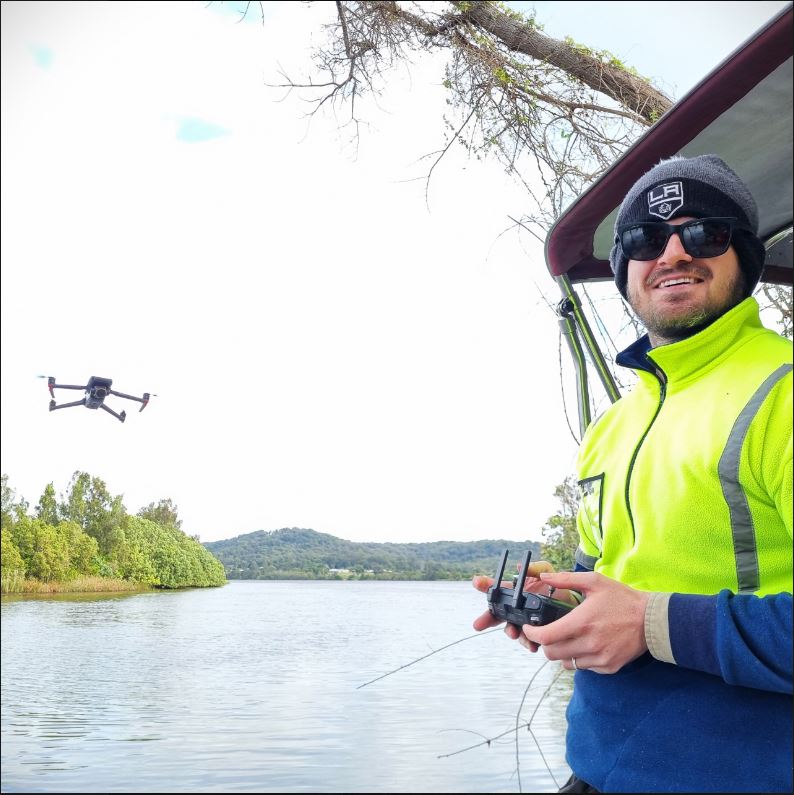Estuarine habitat monitoring and threat assessment
 Left: Impacts to seagrass from boating infrastructure visible in aerial imagery.
Right: Mangrove trees totally or partially defoliated by a severe hailstorm travelling from right to left of image (Port Stephens). Most trees have not recovered after 5 years.
Left: Impacts to seagrass from boating infrastructure visible in aerial imagery.
Right: Mangrove trees totally or partially defoliated by a severe hailstorm travelling from right to left of image (Port Stephens). Most trees have not recovered after 5 years.
Overview
Why is this project important?
Seagrass, mangroves and saltmarsh are important habitats in estuaries for fish and other animals, including species targeted by recreational and commercial fishers.
These habitats also play an important role in stabilising sediments, maintaining water quality and storing carbon.
However, they are under threat from a range of disturbances such as coastal development, pollution and factors associated with climate change, like sea-level rise and extreme weather events.
This project is mapping areas of seagrass, mangrove and saltmarsh habitats in NSW estuaries to help understand:
- changes to these habitats over time
- impacts of different disturbances to these habitats.
Disturbances to seagrass, mangrove and saltmarsh being investigated include:
- jetties and pontons (which shade seagrasses)
- block and chain boat moorings (which can physically remove seagrass)
- offroad vehicles
- climate change (including sea level rise and the effects of extreme climate events)
- and cattle grazing.
This information will help us better identify and understand impacts to these estuarine habitats to inform management activities.
These maps also provide a useful resource to land managers (such as councils) to keep track of estuarine vegetation in their local government area.
Mapping for this project has been conducted using new artificial intelligence techniques to identify species from aerial pictures and to assess the condition of some habitats.
Specialised images (multispectral) taken by drones or satellites are also being used to detect changes to species of vegetation and estimate habitat condition.
Data from state-wide habitat mapping is being used to:
- identify how human disturbances are contributing to loss of seagrass meadows
- quantify changes to estuarine wetlands and the encroachment of mangroves into saltmarsh in NSW estuaries.
Estuarine habitat dashboard
We have developed the NSW Estuarine Habitat Dashboard so the public can view our estuarine habitat maps and see the changes to these habitats over time. This new dashboard enables the viewing of the latest, as well as historic datasets back to the early 1980s.
The dashboard also displays disturbances to macrophyte habitats, including jetties, pontoons, off-road vehicle damage and areas that were affected by the 2019/2020 bushfires.
What have we achieved so far?
Some achievements from the Estuarine habitat monitoring and threat assessment project to date include:
- Mapping over 15,500 hectares of estuarine habitat and disturbances mapped in 39 estuaries (as of July 2023)
- Developing the NSW Estuarine Habitat Dashboard so the public can view habitat maps and areas of disturbance in mapped estuaries
- Enabling boaters to view seagrass maps via the Deckee app
- Modelling potential changes to mangrove and saltmarsh habitats due to sea level rise in partnership with researchers from NSW Department of Planning and Environment. Maps of predicted habitat extent are available on the NSW Estuarine Habitat Dashboard
- Publishing several scientific papers describing changes to seagrass habitats over the last 40 years, causes for the fragmentation of Posidonia seagrass meadows in NSW estuaries, reduced effects of new oyster aquaculture methods on Posidonia seagrass, and the extent of the damage from the 2019/20 black summer bushfires on wetland habitats
Update March to June 2024
Published all estuarine habitat and disturbance maps on the Estuarine Habitat Dashboard and Fisheries Spatial Data Portal.
For more information about our achievements in Marine Estate Management Strategy, please visit our report page.
Lead agency
DPIRD Fisheries
Partners
We are working with NSW Department of Planning and Environment, Local Land Services and Councils to deliver different aspects of this project.
More information
Our Initiatives
Contacts
Project updates
Encouraging signs for NSW seagrass in warming waters
27 March 2025

Tackling Climate Change: Estuarine Seagrass Under Stress
11 September 2024

Eye in the sky: Drones assist mapping estuarine habitats
18 October 2024
